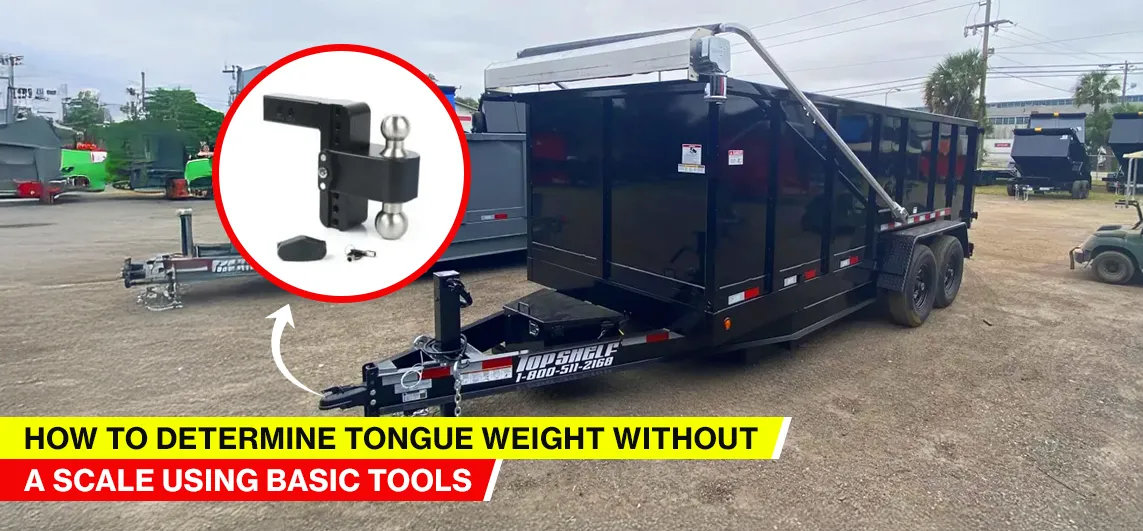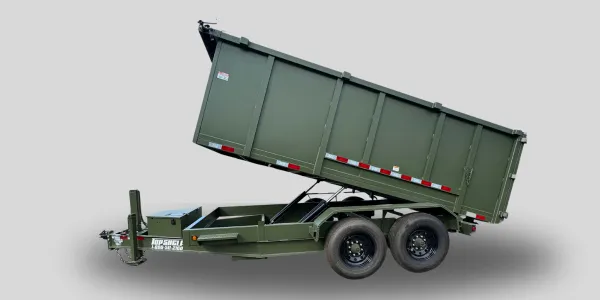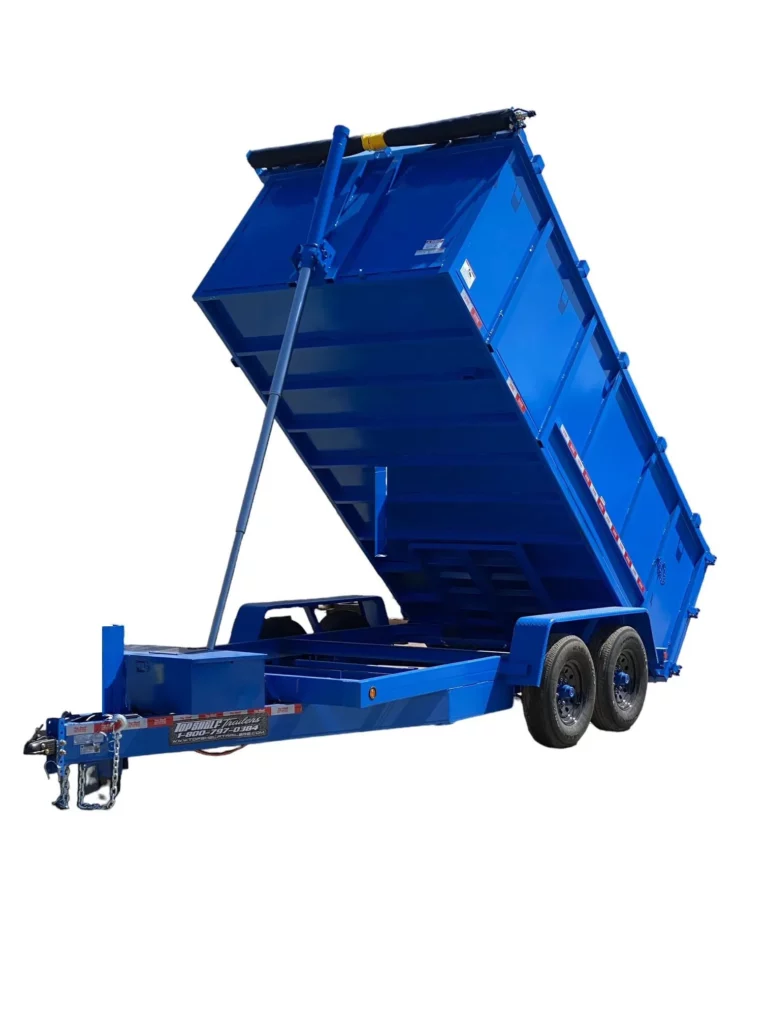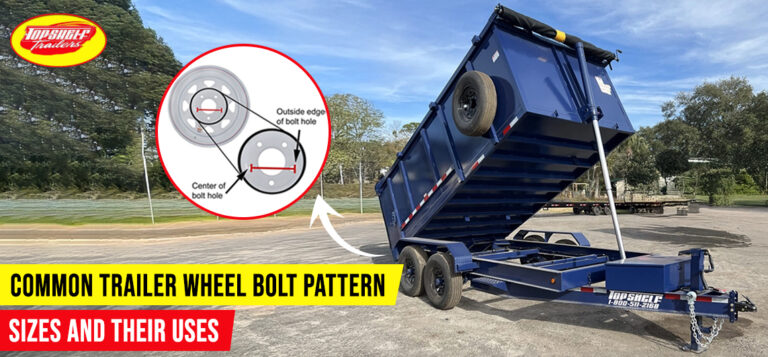Are you wondering how to determine tongue weight without a scale for your trailer? Well, you are not the only one with a burning query.
For most trailer owners, the thought of purchasing a specialized tongue weight scale is not always practical. Not that it is superbly expensive, or hard to find. It all comes down to whether it is convenient. Also, there are abundant alternatives that are simple and DIY-centric.
If you are a trailer owner reading this, determining tongue weight is crucial. It is a fundamental requirement for a safe and stable towing experience.
Fortunately, with a few everyday household items and a little bit of careful effort, you can accurately determine your trailer’s tongue weight. And you do not need to buy a dedicated trailer tongue scale.
The method relies on a simple principle of physics and provides a reliable way to ensure your trailer is balanced.
In this comprehensive read, we will take you through a step-by-step process to determine tongue weight. With the perfect blend of basic tools and an effective and trustworthy measuring system, you shall have a perfectly balanced trailer.
What Is the Tongue Weight of a Trailer?
Before we dive into how to determine tongue weight, let’s demystify what a tongue weight is. Simply put, it is the downward force that the trailer’s coupler exerts on the hitch ball of your tow vehicle.
The tongue weight is the amount of pressure pushing down on the end connected to your car. This seemingly small detail plays a colossal role in the overall stability of the towing setup. It determines whether the pressure is distributed and balanced.
Why is it so critical?
If your tongue weight is too low, your trailer can become unstable and prone to dangerous swaying. It is often referred to as a trailer wagon. The trailer can oscillate violently, making it difficult to control. It can lead to a jackknife situation or even the loss of control of both vehicles.
Conversely, if your tongue weight is too high, it puts excessive strain on the rear suspension of the tow vehicle. The back of your vehicle sags significantly, lifting the front wheels slightly. It instantly reduces steering control and braking effectiveness. It also overstresses the vehicle’s frame, tires, and hitch.
In most cases, it has led to premature wear and tear or even structural damage.
The general rule of thumb for optimal tongue weight is 10% to 15% of the total loaded trailer weight. So, if your fully loaded trailer weighs 5,000 pounds, your ideal tongue weight would be between 500 and 750 pounds.
Understanding this fundamental concept is the first crucial step to becoming a confident trailer tower. And in this comprehensive read, we aim to guide you the right way.
Why You May Not Have a Tongue Weight Scale?
If tongue weight is so important, why wouldn’t everyone just own a scale? – A valid question indeed.
Firstly, a tongue weight scale simply is not a common household item. Yes, if you own multiple trailers and your job is connected to them. However, it is still rare.
Tire pressure gauges or socket sets are standard. A tongue weight scale is a specialized tool that most people do not think to buy unless dealing with experienced issues.
The initial cost can also be a deterrent. Although it is not exorbitantly expensive, it requires an additional investment, which may not always be justifiable.
Another reason is awareness of the importance of tongue weight. It is not very common knowledge. The general education of criticality on this specific aspect is still evolving.
Hence, people seek out alternative, DIY solutions only after encountering stability issues or realizing the potential dangers of improper weight distribution.
It is precisely why knowing how to determine tongue weight without a scale becomes an incredibly valuable skill. And you can indeed save much money.
Tools Required for Manual Tongue Weight Measurement
Alright, so you are ready to tackle tongue weight without a fancy scale.
The good news is, you likely have most of the necessary tools for a manual tongue weight measurement.
These are simple, inexpensive tools and can correctly and carefully offer accurate results –
1. A Bathroom Scale (Digital or Analog)
A regular scale is designed to measure downward force, which is precisely what tongue weight is. For safety and accuracy, ensure it has a weight capacity greater than your estimated tongue weight.
Most standard bathroom scales can handle up to 300-400 pounds. If your tongue weight is higher, you will need to adapt with a lever system (coming to that later).
2. A Sturdy Piece of Wood
The wood will serve as a pivot or lever. It needs to be strong enough to support the weight without bending or cracking. The length will depend on the specific method you use, but a length of around 2 to 3 feet is generally versatile.
3. A Pipe or Round Bar
It acts as the fulcrum or pivot point for the lever system. It must be strong enough not to deform under the load and ideally round to allow for smooth pivoting. A section of galvanized pipe or a thick rebar of 1-2 feet works well.
4. Measuring Tape
It is an essential tool for precise measurements when setting up your lever system. Accuracy here impacts the reliability of your final calculation.
5. Block or Cinder Block
It helps create a stable, elevated platform for your bathroom scale and the fulcrum point. However, safety first – ensure it is solid and will not tip over.
6. Wheel Chocks
Chock the trailer wheels securely to prevent any movement while you are working around it. This is non-negotiable.
7. Gloves
It is a protective measure for your hands, especially when handling wood, metal, and trailer components.
8. Pen, Paper, and Calculator
It will help you jot down measurements and perform the simple calculations required. A smartphone calculator works perfectly.
9. Level (Optional but Recommended)
A level ensures your trailer, scale, and lever system are as level as possible. It typically reduces measurement errors.
With these basic tools and careful execution, you will be able to get an accurate reading of your trailer’s tongue weight. It offers a safe and more stable towing experience without investing in an off-the-shelf, professional tongue trailer scale.
How to Find the Tongue Weight of a Trailer?
There are a few methods to find the tongue of a trailer. It is easy, but it depends on the estimated tongue weight of your trailer.
We will cover two primary approaches: the direct method (for lighter trailers) and the lever method (for heavier trailers).
Method 1: The Direct Method
(For Lighter Trailers – Tongue Weight up to ~300-400 lbs.)
It is one of the simplest methods to weigh the tongue if your bathroom scale can handle it.
Here are the Steps –
- Place the sturdy block or cinder block on the ground where the trailer jack will rest. You can also opt for specialized hydraulic tongue jacks for greater safety.
- Now, place the bathroom scale directly on top of the block. Ensure it is stable and does not wobble. If using a digital scale, make sure it’s turned on and zeroed out.
- Slowly lower the trailer jack until the coupler rests onto the center of the bathroom scale’s platform.
- Ensure the entire weight of the tongue is supported solely by the scale. The trailer’s front jack wheel should be off the ground.
- Ensure the scale is level and not tilted, which could give an inaccurate reading.
- Once the weight has settled, read the measurement displayed on your bathroom scale. This is your approximate tongue weight. Take the reading quickly before the auto-off feature on some digital scales kicks in.
Note: The maximum capacity of your bathroom scale limits this method. Do not exceed the scale’s maximum weight limit. It can damage the scale or lead to inaccurate readings.
Method 2: The Lever Method
(For Heavier Trailers – Tongue Weight Exceeding Bathroom Scale Capacity)
It uses the principle of leverage to reduce the actual weight applied to the scale, allowing you to measure heavier tongue weights. It involves a simple calculation.
Steps:
- Place a sturdy block or cinder block on the ground. Place the bathroom scale on top of this block.
- Place the pipe (the fulcrum) on another sturdy block or directly on the ground. Maintain a safe distance from the scale; it is crucial.
- Take your sturdy piece of wood, followed by these steps –
- Measure ‘A’: Place one end of the wood directly over the center of your bathroom scale. This is where the force is being measured.
- Measure ‘B’: Place the pipe under the wood. This pipe should be exactly a foot away from the end of the wood resting on the scale. This distance ‘B’ is your pivot point.
- Measure ‘C’: From the center of the pipe, measure out 3 feet in the opposite direction from the scale. This is where your trailer coupler will rest.
- Lower the trailer jack until the trailer coupler rests firmly on the marked point. That is, 3 feet from the fulcrum and on your piece of wood.
- Ensure the wood is stable and the scale is still level. The jack wheel should be off the ground.
- Read the weight displayed on the bathroom scale. This is not the actual tongue weight, but a fraction of it due to the leverage.
- To find the actual tongue weight, there is a simple formula based on the lever principle.
Actual Tongue Weight = (Scale Reading) x (Distance from Fulcrum to Coupler) / (Distance from Fulcrum to Scale)
Once you have the readings and performed the calculation, raise the trailer jack to lift the coupler off the wood. Disassemble your setup and store your tools safely.
Remember: The precision of your measurements (‘B’ and ‘C’ distances) is crucial. Any inaccuracies here will affect your final calculated tongue weight. Always double-check your measurements before lowering the trailer.
Tips for Accurately Measuring Trailer Tongue Weight
Accurately measuring your trailer’s tongue weight is crucial for safe towing. Improper tongue weight can lead to a host of problems, including unstable handling, fishtailing, and excessive stress on the tow vehicle’s hitch and suspension.
There are professional scales and sophisticated methods to get a very accurate measurement. However, since we are DIY-ing it today, it’s best to go for some careful execution.
Understand What You Are Measuring
You are not measuring the weight of the trailer itself, but the downward pressure it puts on the hitch. The pressure can change dramatically depending on how the trailer is loaded. A heavy load at the very back of the trailer will reduce the tongue weight. It will lead to instability.
Similarly, a heavy load at the front can increase the weight, potentially overloading your tow vehicle. Always measure trailer tongue weight with the trailer fully loaded.
Tips for Accuracy
As mentioned earlier, a level trailer is paramount. A high nose will reduce tongue weight, while a low nose will increase it. Use a good quality level on the trailer’s frame.
Take your time with each measurement. Re-check your readings and procedures. Also, learn to document everything. Write down your measurements, the trailer’s loaded weight, and the resulting tongue weight. The data is invaluable for future reference and for adjusting your load for optimal safety.
With these tips in your arsenal, you can confidently and accurately measure your trailer’s tongue weight. The goal is to ensure a safer and more stable towing experience for you and others on the road.
Make Weighing a Habit
Tongue weight is not a once-done-forget-it task. It changes every time you load new gear, fill a water tank, or even shift items around inside the trailer.
It is a good practice to check your tongue weight before every major trip. At the very least, re-measure it whenever you make a change to your trailer’s cargo arrangement.
Do Not Overlook the Simple Tools
While specialized scales are convenient, you do not always need them.
For lighter trailers, the tried-and-true bathroom scale method is reliable and inexpensive. The key is to be meticulous with your setup and calculations.
Understand Your Weight Distribution Hitch
A weight distribution hitch is a powerful tool for improving towing stability. However, it is not a magic bullet.
The hitches are designed to distribute the tongue weight more evenly across all axles of the tow vehicle and trailer. This applies to all types of trailers available.
When selecting a weight distribution hitch, remember that its capacity needs to be rated for the adjusted tongue weight. The hitch itself influences the weight.
Always consult with the best dump trailer manufacturers for reliable recommendations. We also suggest factoring in the total weight, including any cargo in the bed of your tow vehicle.
The 10-15% Rule is Your Guide
We have mentioned it earlier, and will do it again for your safety. The 10-15% rule is not just a suggestion—it is a critical safety guideline.
A tongue weight below 10% leads to dangerous trailer sway. Similarly, a tongue weight above 15% overloads your tow vehicle’s rear axle and compromises steering.
Keep this range in mind as you arrange your cargo to ensure a balanced and secure journey.
When to Use a Dedicated Tongue Weight Scale?
Everything tends to have a limit, and so do DIY options. If you are a professional trailer expert, investing in a dedicated tongue weight scale is often the most reliable and convenient option.
It is smart and provides accurate measurements and peace of mind, especially in certain situations.
1. When a Bathroom Scale Will Not Suffice
Most standard bathroom scales have a weight limit of 300-400 lbs, sometimes up to 500 lbs. If your trailer’s tongue weight, as measured with the lever method, seems like it would exceed this, a dedicated scale is needed.
2. Heavy-Duty Trailers
Travel trailers, large boat trailers, car haulers, livestock trailers, and larger utility trailers have tongue weights close to thousands of pounds.
3. Legal Compliance and Safety Standards
Businesses towing for commercial purposes face stricter regulations and liability concerns. Accurate tongue weight measurement is crucial for demonstrating compliance with weight limits and safety.
4. Insurance Requirements
In some cases, insurance policies for high-value cargo might imply the need for proper loading. It necessitates accurate weight measurements with a dedicated scale.
5. Engineering Excellence, Delivered Nationwide
Accurate tongue weight measurement is the foundation of safe towing, yet you don’t have to spend a fortune purchasing equipment to achieve this. Using the bathroom scale method, the homemade pivot point method, or by calculation, these low-cost devices can lead to the perfect 10-15% tongue weight ratio for maximum trailer performance.
Don’t forget, proper tongue weight isn’t about complying with regulations—it’s about saving your investment, keeping roads safer, and being in control of your trailer under all conditions. Spending the time to calculate and adjust your tongue weight properly will reward you with safer towing and prolonged trailer life.
Ready to Upgrade to a Premium Dump Trailer?
When you’re prepared to invest in a high-performance dump trailer engineered for better performance and constructed to withstand heavy loads with ease, Top Shelf Trailers is here for you. As a family-owned business with expertise in the production of 6-, 7-, and 8-foot-wide dump trailers, they produce 10 trailers daily and have more than 90 units in inventory for instant delivery throughout the US.
Don’t settle for low-quality trailers that can’t handle your most challenging work. Experience Top Shelf quality with trailers that can withstand the worst of conditions and are backed by exceptional customer service.
Your next job is worth the reliability and performance only Top Shelf can offer.




